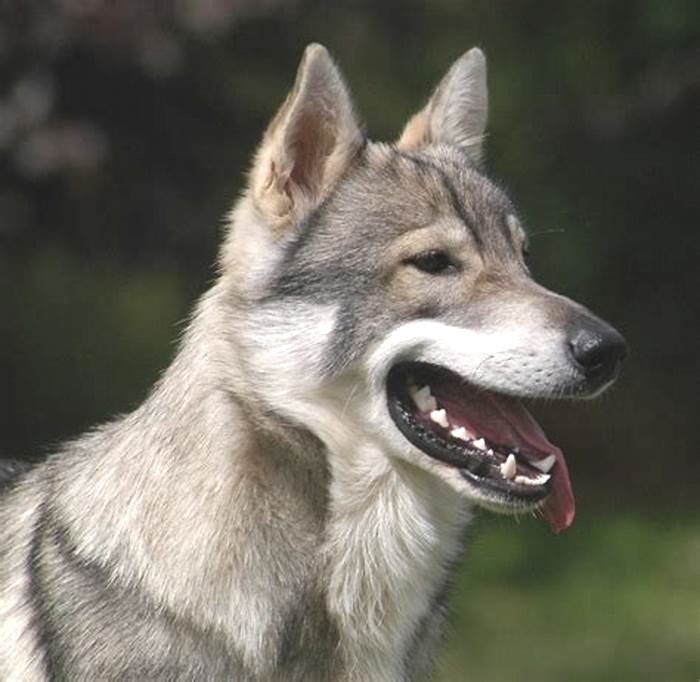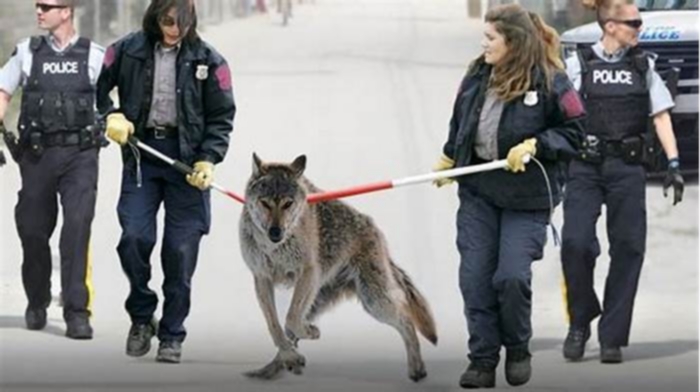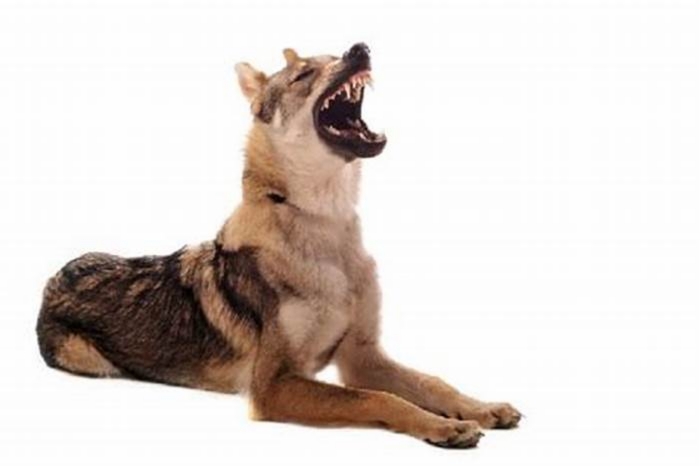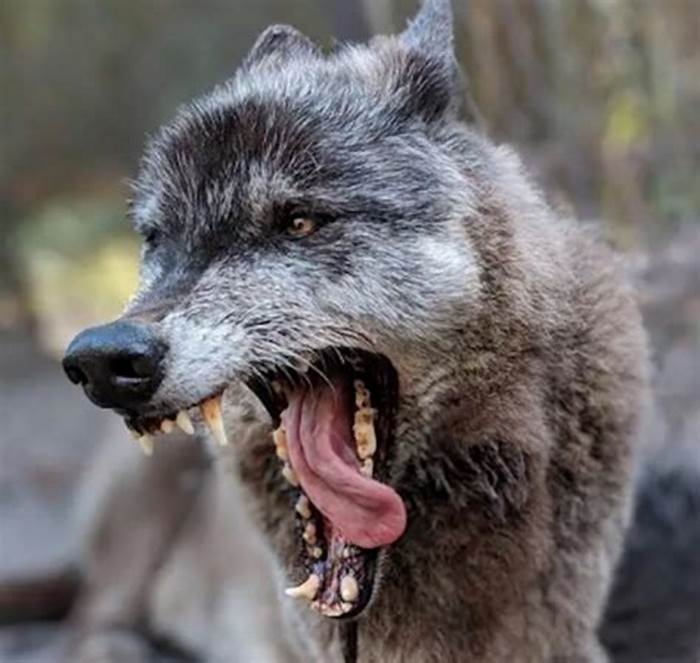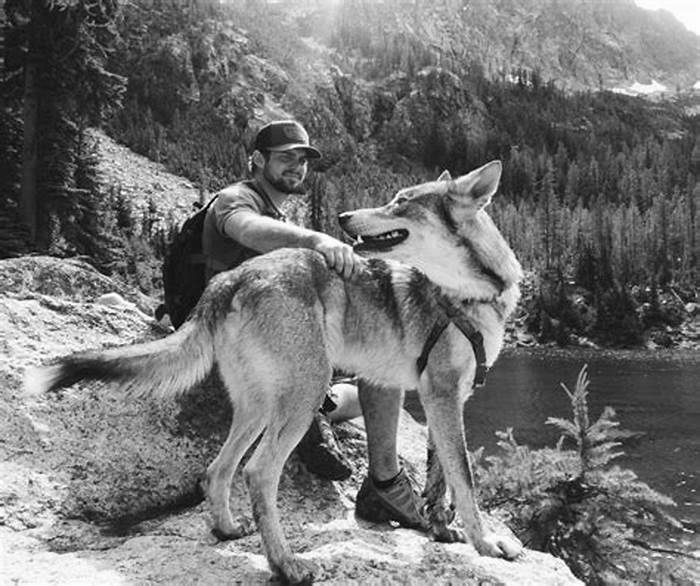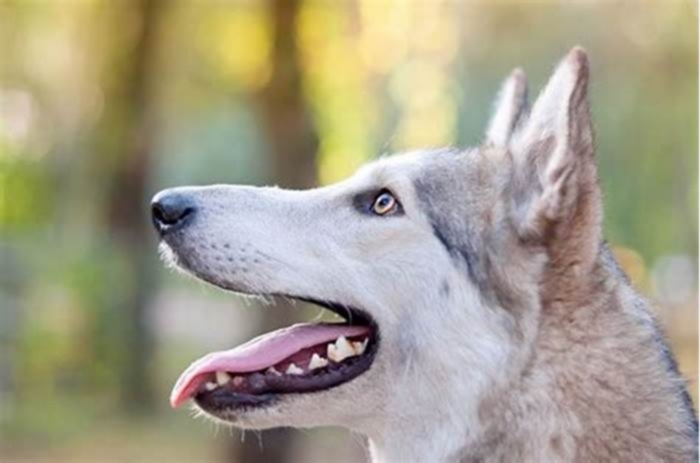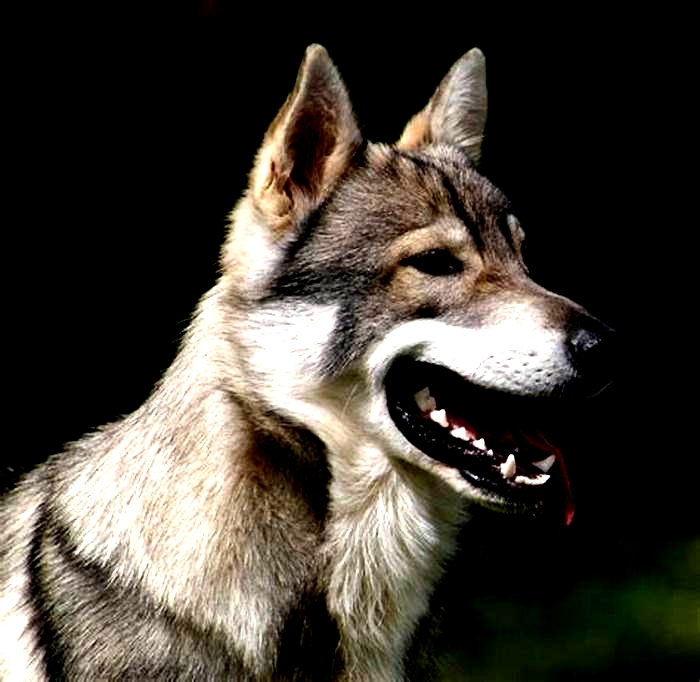How are wolf dogs different from regular dogs
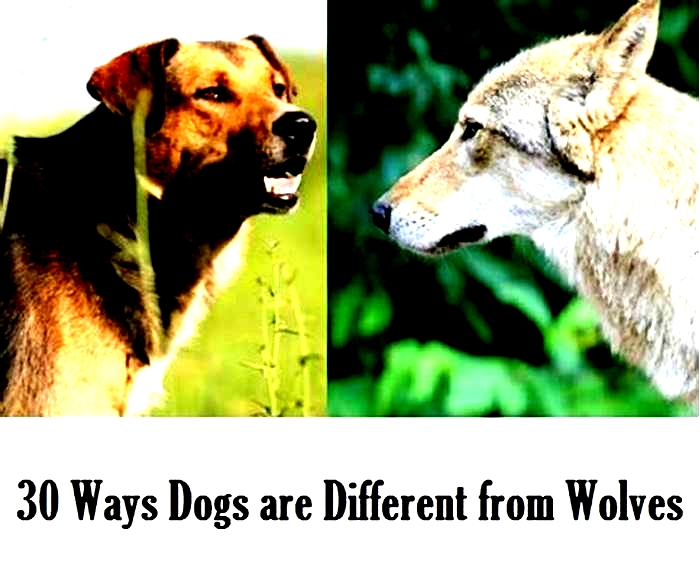
How Wolf Dogs Are Different from Regular Dogs
Wolves have long been perceived as mysterious creatures of the dark. They have held iconic roles in folklore for generations, from The Three Little Pigs to The Boy that Cried Wolf. Due to their high intelligence, curious nature, and devotion to family, humans are dedicated to breeding wolves that possess the best characteristics of both wolves and domestic dogs.
Referred to as wolf dogs or wolf-dog hybrids, these sophisticated animals share ancestry with full-blooded wolves. However, despite their close genetic relationship with wolves, wolf dogs have been carefully bred to be kept as domesticated dogs. Learn more about wolf dogs and the differences between these creatures and regular dogs.
What Is a Wolf Dog?
A wolf dog is a cross between a wolf and a domesticated dog. The breeding of wolf dogs and wolf hybrids continues to be a controversial topic as many believe these animals are dangerous due to their wild ancestors and instinctive predator nature.
There are currently no nationwide laws that prevent U.S. residents from owning wolf dogs. However, some states require residents to acquire permits or build special enclosures to keep wolf dogs as pets.
What are the Differences Between Wolf Dogs and Regular Dogs?
Despite shared genetics and an ability to interbreed, wolf dogs differ from regular dogs. Wolves are wild animals and have developed the keen skills needed to survive in the wild by finding food, protecting themselves from predators, and producing offspring.
Domestication occurs when a wild animal adapts to living with humans by being selectively bred over thousands of years. While dogs share a common ancestor with wolves, this centuries-long process of domestication has allowed them to live peacefully alongside humans in homes.
Wolf dogs may physically appear similar to wild wolves but have distinct physical and psychological differences that make them closer to domesticated dogs. However, these animals still have a long way to go toward becoming common household pets.
Heres a close look at how wolf dogs differ from regular dogs:
Wolf-Dog Behavior and Temperament
One of the most noticeable differences between wolf dogs and regular dogs is temperament. Despite efforts to make wolf dogs act more like domesticated canines, this crossbreed has retained certain qualities and characteristics that can make them difficult to integrate into family households.
Unlike many easy going dog breeds like pugs, Golden Retrievers, bulldogs, and beagles, wolf-dog species are not always friendly and can be quite aggressive towards humans or other animals. Due to their large size and strength, wolf dogs are generally not recommended for the average household.
Wolf dogs are often more feral than your average domesticated dog. This means that most wolf dogs require extensive socialization and training before being integrated into society. As pack animals, wolves have instincts that drive them to protect their food source and mark their territory, traits that can be useful in the wild but unwelcome in households.
What Do Wolf Dogs Eat?
Domesticated canines require six basic nutritional components: water, fats, proteins, minerals, vitamins, and carbohydrates. Like wolves, dogs are carnivores; however, they have been bred to get their nutrition through sources besides meat.
Most dogs can thrive on commercial pet foods that contain all of the nutrients they need to maintain good health and wellness. Wolf dogs do not thrive on general commercial dog foods and do best on foods that they would generally eat in the wild, such as raw meats.
It is generally recommended to feed wolf dogs a raw diet that includes chicken, beef, or turkey. Raw pork should be avoided as it can contribute to digestive problems. In addition, wolf dogs require access to fresh grass and other vegetation, as well as occasional fruits.
As it can be difficult to get wolf dogs the nutrition they need in domesticated environments, many wolf dogs can benefit from nutritional supplements, such as vitamins A, B, C, D, and E, as well as glucosamine. Supplements like garlic, alfalfa, and wheatgrass can help lower the risk of common health issues, such as skin issues and arthritis.
Exercise and Training for Wolfdogs
While all dogs should have daily exercise, some breeds like French bulldogs and Chihuahuas are quite content lounging around the house. Wolf dogs, on the other hand, require a great deal of exercise, ideally three to four hours per day. Wolf dogs that are confined to homes without ample exercise can suffer from behavioral and health issues.
Due to their athleticism, wolf dogs generally need to be kept in an enclosed space with walls at least eight feet high. In addition, buried barriers with reinforced mesh should be placed along the base of the fence to prevent the animal from digging underneath.
Regular exposure to people and places can help wolf dogs better adapt to living with humans. However, wolf dogs can become skittish or fearful when exposed to public places, which can result in biting.
Spraying or neutering can help tame some of a wolf dogs wild instincts. Extensive training, preferably by a professional, is essential to ensure that the wolf dog is not dangerous and can make a good indoor pet. However, even with training, wolf dogs can be unpredictable, meaning they should not be put in homes with small children.
Should You Keep a Wolf Dog as a Pet?
Wolf dogs are undeniably intelligent, beautiful animals that can make great companions. However, due to their unique differences from domestic dogs, they require a special owner who has the time, space, and passion to properly train them and meet their special nutritional and exercise needs.
Wolf-Dog Hybrids
Myths Regarding Wolf Hybrids
MYTH:A wolf hybrid will make a better guard dog.
FACT:Due to the shy nature of wolves, hybrids usually make poor protection dogs. Aggressive tendencies, if any, in the hybrid may be fear induced and as such, can be unpredictable and hard to control.
MYTH:A wolf hybrid will live longer than a dog.
FACT:The life span of a wolf in captivity is 12-14 years the same as a large domestic dog.
MYTH:Hybrids are healthier than dogs, and are less prone to disease.
FACT:Wolves and dogs are prone to the same infectious diseases. There may be some question as to the efficacy of standard dog vaccines in wolves and some hybrids.
MYTH:Huskies and malamutes are part wolf.
FACT:Huskies and malamutes are breeds of dogs, like any other.
Wolf Content in the Hybrid
Many breeders who deal in wolf hybrids promote the wolf content of the pups and even set their prices according to the amount of wolf blood in the litter. This is not based on sound biology or genetics.
When one breeds a dog with a wolf, the offspring will inherit a set of genes from each parent, and are indeed 50/50 that is, one-half dog and one-half wolf. However, when these animals are backcrossed with other wolves, dogs, or hybrids there is no way to calculate or manipulate which genes are passed to any individual offspring. Often breeders believe, for example, that a 50 x 50 hybrid backcrossed with a 100% wolf would yield an offspring that is 75% wolf. However, that would only be an AVERAGE amount of wolf in many backcrosses. Any INDIVIDUAL animal might inherit all the dog genes from the hybrid and be 50 x 50 both physically and behaviorally. Or conversely, any individual could be predominantly wolf, or any variation or combination in between. It is like throwing 50 blue marbles representing a male parent and 50 yellow marbles representing the female parent into a bag and randomly selecting the 50 marbles that will represent the DNA of one offspring. You dont know what you will get. The ideal result would be an individual that looks like a wolf, but behaves like a dog. Unfortunately, often one ends up with an animal that looks like a dog and has the perceived obstinate nature of a wolf.
There are genetic tests available. Those tests look at 3-4 genetic markers, depending on whether it is a male or female. According to the testing lab, what the test can tell the owner is whether there has been wild wolf DNA in that domestic dogs lineage in the past three generations. Others dont see the test as reliable yet, and what the analysis shows is that the DNA sample simply does not match any known domestic dog DNA on file. This all contributes to the uncertainty of how to determine what is a hybrid. People working with hybrids often look at several factors: physical appearance, and behavioral history to make an educated decision about whether an animal is a hybrid. The result is to label hybrid as low, medium, or high content wolf depending on the degree to which the animal looks and behaves like a wolf.
15 Stunning Wolf Dog Breeds (You Can Have as a Pet)
Wolf-like Features: With their powerful build, thick double coat, and bushy tail that curls over the back, Canadian Eskimo Dogs exude a wild and majestic presence. Their wedge-shaped head and erect ears add to their wolf-like appearance.
Coat Colors and Patterns: The breeds coat can come in a variety of colors including white, black, grey, and red.
Size and Weight: As a larger breed, Canadian Eskimo Dogs stand at about 20 to 27.5 inches at the shoulder, with males being significantly larger than females. Their weight ranges from 40 to 88 pounds, showcasing their robust and muscular physique.
Temperament: True to their sled dog heritage, Canadian Eskimo Dogs have strong pack instincts and thrive in environments where they can interact with their human family or other dogs. They form deep bonds with their owners and can be quite protective.
Exercise Needs: With energy to spare, Canadian Eskimo Dogs require ample exercise to stay happy and healthy. They excel in activities that challenge them physically and mentally, such as sledding, skijoring, and agility.
Health and Lifespan: Generally healthy, the Canadian Eskimo Dog has a lifespan of 10 to 15 years.
Ease of Ownership: 6/10. While the Canadian Eskimo Dog makes a loyal and loving companion for the right owner, their high energy levels, protective instincts, and need for regular exercise make them a challenging breed for first-time dog owners or those living in smaller spaces. With proper training, socialization, and plenty of activity, however, they can be a rewarding addition to an experienced and active household.
Wolf Dogs vs Wolf Hybrids: Whats the Difference
Have you ever considered getting a wolf dog or wolf hybrid? These interesting animals have gained popularity in recent years, but theres still a lot of confusion about what they are and how they differ from regular dogs.
In this post, well clear up the confusion and help you decide if a wolf dog is the right pet for you.
What is the difference between wolf dog and wolf hybrid?
Wolves and wolf-dogs or wolf hybrids have many similarities, but there are also a few major differences you should be aware of.A wolfdog is an animal that is part wolf, usually with one parent being a wolf while the other is either a domestic dog or another species of wolf.
This hybrid remains relatively wilder than a domesticated dog because the majority of its ancestors are wolves. Wolf hybrids, on the other hand, do not contain any actual wolves in their lineage. Instead, they are created by crossing dogs and domesticated coyotes, jackals, and other animals that have similar looks to wolves.
These hybrids are also not known for being good pets as they respond more strongly to animal instincts than some other breeds due to their genetic makeup. Therefore, if youre ever looking into getting one of these animals as a pet, its important to understand the difference between these two species beforehand.
Is there a difference between a wolf and a wolf dog?
Wolves and wolf-dogs are two animals that often get mistaken for one another, but they are unique creatures. While some of their behavior and physical characteristics may have similarities, there is much that sets them apart.
Wolf dogs, for instance, are a hybrid species bred from wolves and domestic dogs; these wolf hybrids may exhibit both wild and domesticated traits.
On the other hand, real wolves are a wild species of their own their behavior is naturally much more feral than that of even their closest relatives.
The differences between wolves and wolf dogs not only lie in their origins but also in temperament; whereas wolf dogs can be handled by humans with relative ease, it is highly inadvisable to provoke or handle real wolves as they usually respond aggressively if threatened or scared. The distinctions between these two animals are significant to understand and should never be taken lightly.
How can you tell if a wolf dog is a hybrid?
Hybrid wolf dogs can be difficult to tell apart from their purebred cousins, but there are a few key ways that you can identify them. Typically, wolf dogs will have higher energy levels than their purebred counterparts and may be quicker to bark or howl than other breeds.
They are usually larger than most dog breeds and they often have pointed ears and muzzles similar to wolves. Additionally, they may sport a variety of different-colored coats with markings similar to wild canids such as grey wolves or coyotes.
You may also be able to look at their pedigrees to determine if their parents were hybrids or purebreds although this isnt always the case. Ultimately, hybrid wolf dogs provide unique companionship for those with the time and energy to care for them properly.
What is a hybrid wolf dog?
A hybrid wolf-dog commonly referred to as a wolfdog is a type of domestic animal resulting from the mating of two animals from different species in this case, part domestic dog and part grey wolf.
These majestic creatures can make powerful and loyal companions if trained from a young age. Amazingly, due to advances in science and understanding of genetics, we now know that when a wolfdog is bred with a domestic dog the result can be even more domesticated than just a regular canine alone!
As they maintain some characteristics of wolves while having been domesticated over time, they require special handling and training to help them live in harmony with humans.
Is a husky a wolf hybrid?
While it can be tempting to think of Siberian Huskies as a fascinating mix between wolves and dogs, the truth is much more straightforward.
Being classed as a spitz type of dog, huskies do share some characteristics with their wild cousins such as pointed ears and instincts but they are a domesticated breed all their own; bred to work hard and help humans with tasks like hauling sleds across icy mountainsides.
These days they make wonderful pets, provided you have the time to give them appropriate exercise since their instinct towards roaming remains. All in all, while undeniably majestic and awe-inspiring animals, huskies are still just dogs!
Can wolf hybrids be pets?
Wolf hybrids can be very interesting pets, but they come with a lot of responsibilities. As an owner, you will need to exhibit strong leadership and a firm hand in the training process. These complex animals need clear expectations as well as plenty of mental & physical stimulation to be satisfied.
They require more engagement than many other domesticated animals and they must be exercised regularly both physically and mentally. All in all, if you are prepared to commit, wolf hybrids can certainly make loyal & loving pets.
The Bottom Line
In conclusion, wolf dogs and wolf hybrids are two distinct animals with startling differences. Wolf dogs are bred from a specific line of wolves and have been bred for decades to be respected canine companions.
Wolf hybrids, on the other hand, appear more like wild animals with unpredictable behaviors and should not be kept as pets. While the two may look similar, their unique temperaments and personalities set them apart. It is important to know the distinctions between wolf dogs and wolf hybrids to differentiate them especially if you are looking into adopting one of these lovable creatures.
If you do decide to bring one home, make sure they have plenty of space to run around in and enough mental stimulation so they dont become bored or overly anxious. Ultimately, both animals need love and attention just like any pet so make sure you are prepared for that responsibility if you think either one could be a good fit for your home.


